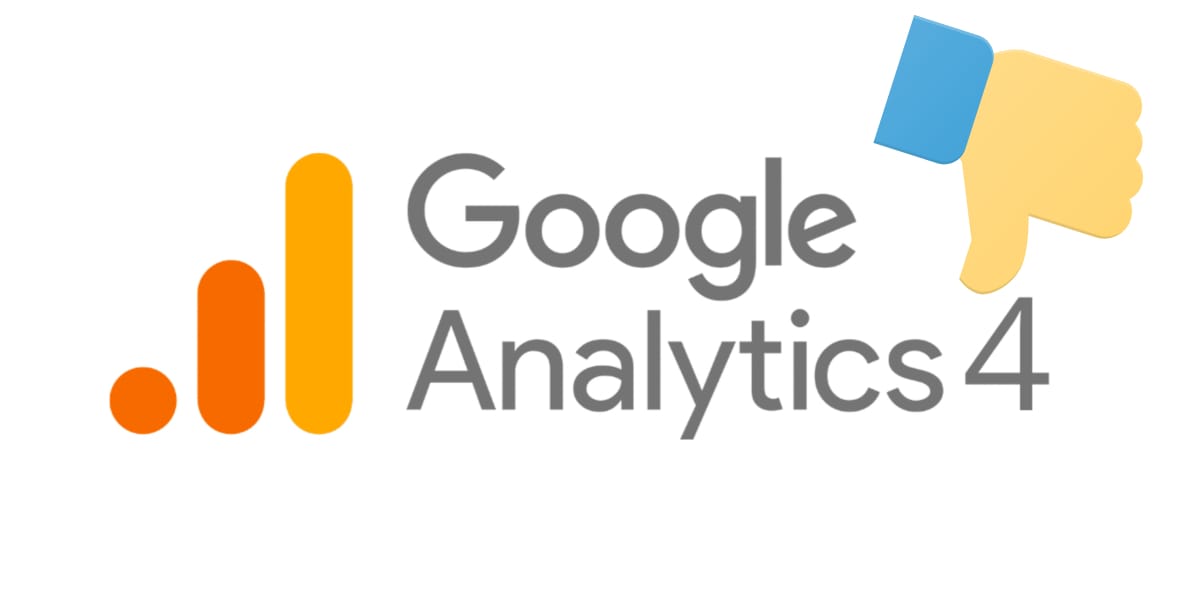GA4 (Google Analytics) Isn’t Great. Here’s How to Make It Better.
Did you know that Google Analytics is showing you data that are based on estimates of the total data? It’s true: Google flat out says it. Here's why GA4 has been such a mess.

Three characters for you: GA4. If you’re not already rolling your eyes and sighing, you may not be as deep in data as we are. GA4 is shorthand for Google Analytics 4, the latest and “greatest” version of the analytics tool that claims the largest market share, to the tune of nearly 30% of all businesses who use analytics tools at all.
And yet, with all the millions of companies that rely on Google Analytics, GA4 has been incredibly…divisive? Controversial? Maybe we should let Reddit describe the overall sentiment of many marketers using it:
Why So Many Users Dislike GA4
GA4 is Hard to Use
GA4 is a powerful analytics tool that can help all businesses get better insights into their web traffic and beyond. However, the general consensus is that the interface and usability is quite poor. The number one complaint you’ll see online about GA4 is all about UI and UX because it’s just so complicated and unintuitive to use.
This of course is a huge problem for any piece of software. No matter how powerful something is, if humans don’t like using it, they will avoid it as much as possible. And studies have shown that most users never utilize GA4 past the very basic uses:
The vast majority of websites that use a Google measurement product do not go beyond a standard installation that is unlikely to help them improve the performance of their website. Also, the motivation to use the latest enhancements seems to be low: more than three years after the availability of Google Analytics 4 and less than a year before the shutdown of the previous versions, mainly older versions are used. - source
And while a poor user interface is what is the biggest thorn in the side of users, that’s not even the worst part of GA4.
GA4 Only Approximates Data
Did you know that Google Analytics is showing you data that are based on estimates of the total data? It’s true: Google flat out says it:
Data sampling is the data-analysis practice of analyzing a subset of data in order to uncover meaningful information from a larger data set. The practice enables you to retrieve data more quickly with minimal impact on data quality.
It’s understandable why a free analytics tool may resort to data sampling to save on processing time and costs. And of course, it’s also a great way to push users to use their paid analytics tools like Analytics 360.
But this does raise data quality questions. A data conclusion based on a sample of data may not always be accurate, especially when the sample set may be much smaller than you think. In Marketing has seen warnings such as this:
Would you trust data insights when less than 38% of your available data was used to provide those numbers you see in GA4? We wouldn't.
GA4 Won’t Retain Your Old Data
GA4 has been a long time coming, so there has been fair warning. Still, it’s a bit unnerving to know that any Google Analytics user who hasn’t migrated to GA4 by July 1, 2024 will lose access to all their previous data history.
Data analytics runs on historical data. Without it, businesses can’t trend, compare, contrast, or know much of anything except what is currently happening. Google Analytics users have just a couple choices to preserve their data within the GA ecosystem: migrate to GA4 (and we’ve already discussed what a hassle learning the new interface is) or export all your data to a massive spreadsheet.
Well that’s a headache. Isn’t there a better way forward?
How 42 Fixes Your GA4 Problem
We here at 42 know how important great data is to everyone, especially retail brands. Data-driven reporting is key to growth, and to be an efficient business in a competitive space like retail, your brand has to be completely on top of your data and data analytics.
So let’s take the three issues with GA4 from the bottom up. First off, 42 understands the importance of historical data. Not only do we retain all of a client’s previous data, we can also help retail your previous Google Analytics data as well. Integrating with 42 syncs your historical GA data so you’ll never lose access to it, even if you never switch to GA4.
42 also never uses “data sampling” or estimations when we crunch your numbers in our analytics platform. 42 leverages every last decimal point when we analyze and display your data in our interface. Because 42 syncs with GA4 through the API, the data we collect and store from Google Analytics is the most granular and unsampled data each day. Queries are run on the unaggregated data to provide 42 users with the most accurate and consistent results possible.
Finally, when it comes to usability, you won’t find Reddit threads calling our UI “hot garbage.” In fact, our customers frequently tell us they live in the 42 interface daily because it’s supremely easy to navigate and to pull the data exactly how they want to see them.
“The easiest thing about starting with 42 was how user-friendly it is, and how quickly you could get up to speed. I literally just think about what I want to know and then I drag and drop the bubbles.” - Kristina Shiroka, VP Merchandising & Planning @ Doen
If you’ve been putting off migrating to GA4, or are fed up with its UI and UX, just reach out. We’d be happy to get you a demo of just how easy and powerful 42 is for your data analytics needs.
